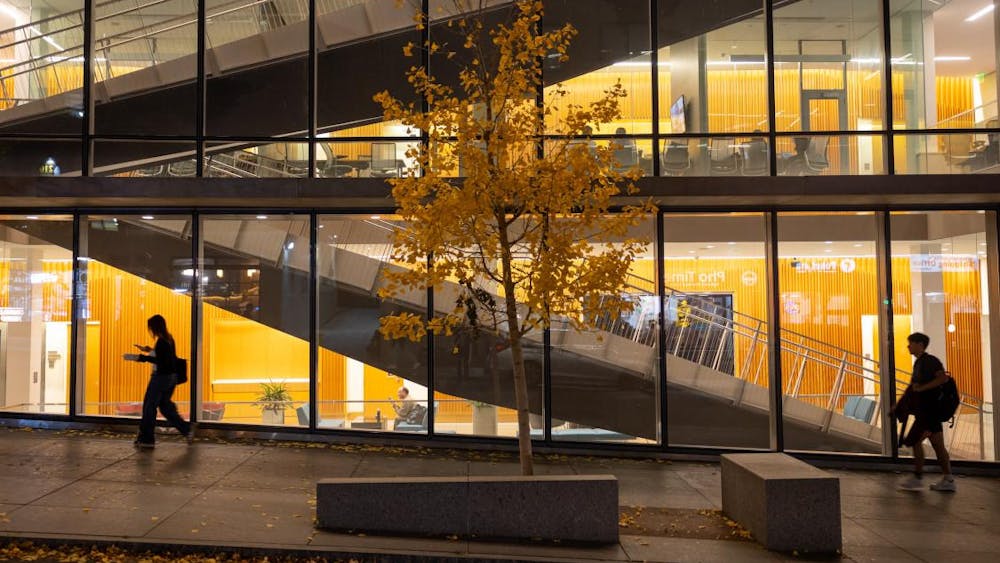An interdisciplinary team of Cornell researchers developed a nanofiber-coated cotton bandage that utilizes the antibiotic and environmentally sustainable properties of Lawsone, a ring-shaped compound found in henna leaves.
Traditional cotton gauze bandages act as a physical barrier for wounds, helping fight infection. However, cotton lacks the properties necessary to actively promote healing. A bandage that can both fight infection and enhance healing must have bioactive agents — compounds that directly influence the biological function of cells and can therefore be used in biomedical applications.
Many cotton-based bandages on the market add cost-efficient synthetic materials such as polyester to enhance wound healing. According to Mohsen Alishahi grad, synthetic materials also have consistent molecular rates and that make them easier to process for wound dressings when compared to their natural counterparts.
However, the push for the development of sustainable technology amid growing concerns on climate change and biodiversity loss inspired the team to create a fully biodegradable bandage that maintains the healing properties of synthetic models.
Three natural agents — Curcumin, Lawsone and Quercetin — were initially explored as candidates for the project by the team of researchers in the fiber science department and College of Veterinary Medicine, led by Prof. Tamer Uyar, human centered design.
Curcumin, the active chemical that gives turmeric its potent yellow color, was proposed because of its anti-inflammatory properties. Quercetin, a pigment in plants, was identified for its antioxidant properties — the ability to address the damages caused by unwanted particles in the body. Lawsone, an extract of the henna leaf often used in hair and skin dye, was proposed for its anti-inflammatory and anti-bacterial properties.
Ultimately, Lawsone was selected for the project due to its superior ability to resist bacterial infection, according to Uyar.
However, Lawsone is not without its limitations. Its low solubility prevents it from being readily absorbed by the body, presenting an experimental challenge. To combat this low solubility while still using sustainable materials, the team used cyclodextrin, a large molecule that binds Lawsone.
“Cyclodextrin is a sugar-like material that comes from starch. It’s also non-toxic and comes from nature,” Uyar said. “All the ingredients that we have used are biodegradable, and that’s why there is no burden on the environment when they are thrown away.”
The team then worked to fabricate the ultra-thin fibers using the electrospinning method, a common practice in fiber science where a high-speed jet formulates woven material. The nanofibers were then used to coat a cotton base. Once the fiber scientists completed the process, they referred their findings to biomedical experts with the necessary materials and expertise in the field of microbial testing. Their role was to test the antibacterial performance of the dressing against known bacterial species.
In collaboration with Prof. Craig Altier, population medicine and diagnostic science, and Senior Research Associate Rimi Chowdhury from the College of Veterinary Medicine, the fiber science team assessed the antibacterial properties of the dressing before adjusting their design in what Alishahi described as a long period of trial and error.
"If we see that we don’t have suitable antibacterial activity, we might have to modify our system to increase the solubility or concentration of Lawsone,” Alishahi said.
The Lawsone dressing was ultimately shown to be a strong protective agent against harmful bacteria. This property is critical, especially amid growing concerns in the medical field over the surge in antimicrobial resistance.
When an antibiotic is used in excess, bacteria may develop resistance over several decades, creating a “superbug” that can overcome the antibiotic and render it ineffective. Although combating antimicrobial resistance is not the primary goal of the research, the Lawsone-coated bandage may slow this process down on account of its use of natural materials.
“By using natural materials, you don’t really create these superbugs,” Uyar said. “That means we are using less sensitive antibacterials, which means there will be less of a problem in the future.”
The Lawsone-coated bandages are to be tested by outside sources before being finalized as a product. The fiber scientists will collaborate with research and development teams to confirm its efficacy before putting it on the market.
As for future developments, the team seeks to expand upon their research by using alternative materials like Curcumin and Quercetin.
Alishahi described the project as a rewarding experience. Despite facing many obstacles and long hours throughout a grueling process, he said it was well worth the challenge.
“When you do multidisciplinary research, you have this kind of connection with everybody,” Alishahi said. “Knowing all of these amazing people, I think that’s the most rewarding part.”
Marissa Gaut can be reached at mlg323@cornell.edu.











